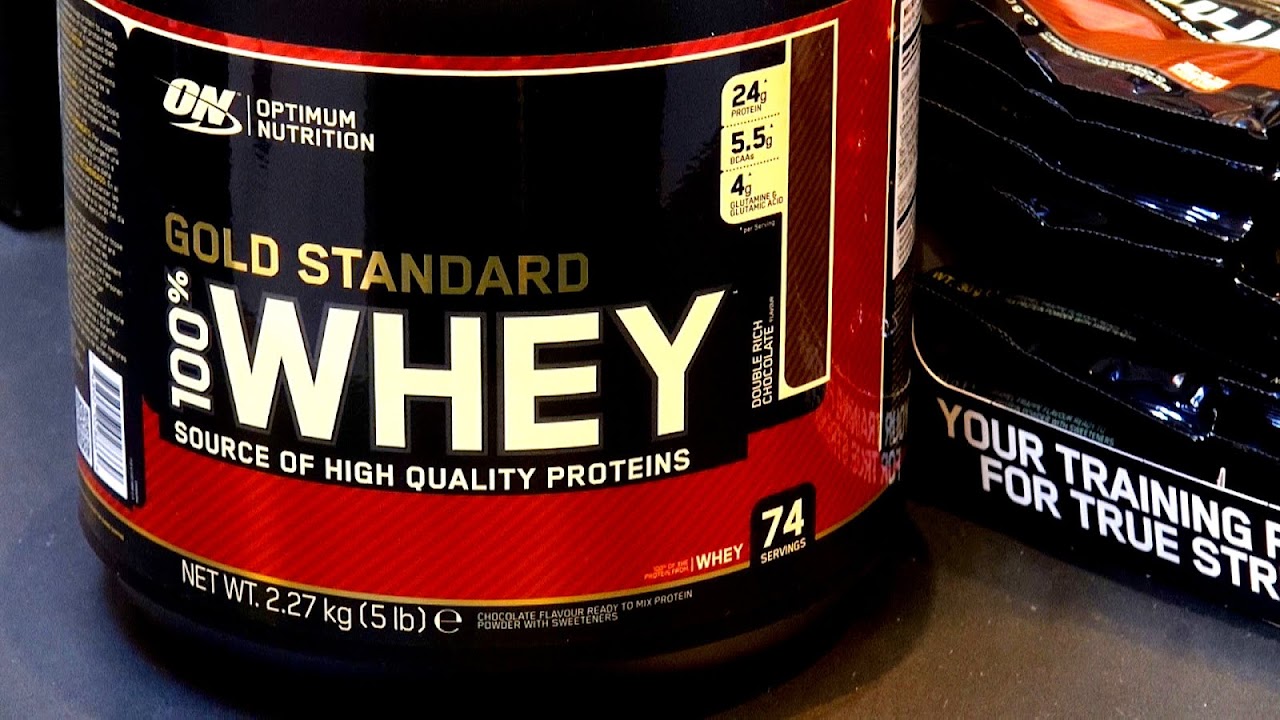
Whey protein is a mixture of globular proteins isolated from whey, the liquid material created as a by-product of cheese production.
Whey protein is commonly marketed as a dietary supplement, and various health claims have been attributed to it in the alternative medicine community. Although whey proteins are responsible for some milk allergies, the major allergens in milk are the caseins.

Maps, Directions, and Place Reviews
Production
Whey is left over when milk is coagulated during the process of cheese production, and contains everything that is soluble from milk after the pH is dropped to 4.6 during the coagulation process. It is a 5% solution of lactose in water, with some minerals and lactalbumin. The fat is removed and then processed for human foods. Processing can be done by simple drying, or the relative protein content can be increased by removing lipids and other non-protein materials. For example, spray drying after membrane filtration separates the proteins from whey.
Whey can be denatured by heat. High heat (such as the sustained high temperatures above 72 °C associated with the pasteurization process) denatures whey proteins. While native whey protein does not aggregate upon renneting or acidification of milk, denaturing the whey protein triggers hydrophobic interactions with other proteins, and the formation of a protein gel. Heat-denatured whey can still cause allergies in some people.
Whey Protein Vegetarian Video
Composition
Whey protein is the collection of globular proteins isolated from whey. The protein in cow's milk is 20% whey protein and 80% casein protein, whereas the protein in human milk is 60% whey and 40% casein. The protein fraction in whey constitutes approximately 10% of the total dry solids in whey. This protein is typically a mixture of beta-lactoglobulin (~65%), alpha-lactalbumin (~25%), bovine serum albumin (~8%)(see also serum albumin), and immunoglobulins. These are soluble in their native forms, independent of pH.
The amino acid cysteine in whey protein is a substrate for the synthesis of glutathione in the body which is a ubiquitous cellular antioxidant; laboratory experiments have suggested that whey protein and its components might reduce the risk of cancer in animals, suggesting an avenue for future medical research.

Major forms
Whey protein typically comes in four major forms: concentrate (WPC), isolate (WPI), hydrolysate (WPH) and Native Whey.
- Concentrates have typically a low (but still significant) level of fat and cholesterol but, in general, compared to the other forms of whey protein, have higher levels of bioactive compounds, and carbohydrates in the form of lactose -- they are 29%-89% protein by weight.
- Isolates are processed to remove the fat and lactose, but are usually lower in bioactivated compounds as well -- they are 90%+ protein by weight. Like whey protein concentrates, whey protein isolates are mild to slightly milky in taste.
- Hydrolysates are whey proteins that are predigested and partially hydrolyzed for the purpose of easier metabolizing, but their cost is generally higher. Highly hydrolysed whey may be less allergenic than other forms of whey.
- Native whey protein is extracted from skim milk, not a byproduct of cheese production, and produced as a concentrate and isolate.

Health effects
In 2010 a panel of the European Food Safety Authority examined health claims made for whey protein. It found the following claims to be unsubstantiated:
- Increase in satiety leading to a reduction in energy intake
- Contribution to the maintenance or achievement of a normal body weight
- Growth or maintenance of muscle mass
- Increase in lean body mass during energy restriction and resistance training
- Reduction of body fat mass during energy restriction and resistance training
- Increase in muscle strength
- Increase in endurance capacity during the subsequent exercise bout after strenuous exercise
- Skeletal muscle tissue repair
- Faster recovery from muscle fatigue after exercise.
Source of the article : Wikipedia


EmoticonEmoticon